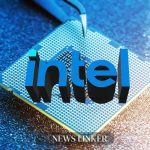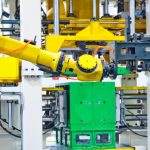As the commercial space race progresses, strategic maneuvers above Earth continue to highlight the collaboration and competition between industry giants. In a recent operation, NASA astronauts aboard the International Space Station (ISS) undertook a critical task of relocating the SpaceX Dragon spacecraft to make room for Boeing’s upcoming Starliner spacecraft. This maneuver not only marks a significant logistic operation but also underscores the growing traffic and operational complexities in low Earth orbit.
Why Is This Spacecraft Shuffle Significant?
The relocation of the SpaceX Dragon spacecraft is pivotal for several reasons. It not only facilitates the arrival of Boeing’s Starliner but also ensures the ISS’s ability to accommodate multiple commercial spacecraft simultaneously. This operation was meticulously executed by a team of astronauts, highlighting the coordination between human efforts and automated systems in managing space traffic and infrastructure.
What Does This Mean for Future Missions?
Such operations are essential for the future of space exploration, suggesting a blueprint for upcoming missions where multiple spacecraft will dock at the ISS or other future space stations. The ability to efficiently manage space traffic in orbit could become a critical aspect of long-term missions, including those to the Moon and Mars, where similar coordination will be necessary on a potentially larger scale.
How Are Other Entities Involved?
This event is not just a NASA and SpaceX achievement but also involves significant input from international partners and private companies. The role of Roscosmos, in particular, highlights the continued importance of international cooperation in space endeavors. These collaborative efforts are crucial for the success of present and future multinational space missions.
In the realm of space exploration, historical context is crucial for understanding the progression and frequency of such missions. The docking and relocation of spacecraft, such as those by SpaceX, have become more routine yet remain complex operations that require precise execution. Previous missions have set the stage for the current procedures, providing valuable data that inform today’s operations and strategies. This iterative learning process is vital for enhancing safety and efficiency as more entities participate in orbital activities.
Discussions in the scientific community, such as those found in the Journal of Spacecraft and Rockets, provide deeper insight into the technical and operational aspects of spacecraft docking. A recent paper, “Automated Docking Systems: Challenges and Technology Advancements,” outlines the intricacies and technological advancements that are shaping the future of spacecraft docking operations. This research underpins the practical experiences of agencies like NASA and companies like SpaceX, highlighting the evolving nature of space technology and operations.
Further information from related articles, such as “SpaceX’s Continued Dominance in Commercial Spaceflight” from SpaceFlight Now and “Boeing’s Starliner: The Next Step in Commercial Space” from Aviation Week, enriches our understanding of the commercial and technological landscapes. These articles emphasize the competitive and collaborative elements that drive innovation in the aerospace sector, shaping the missions like the one undertaken by the SpaceX Dragon and future ones by Boeing’s Starliner.
User-Usable Inferences
- Efficient space traffic management is crucial for future missions.
- International cooperation remains a backbone of space exploration.
- Technological advancements directly influence mission success rates.
As we witness these sophisticated orbital ballets, the importance of technological innovation and international cooperation becomes ever more apparent. The successful relocation of SpaceX’s Dragon to accommodate Boeing’s Starliner not only represents a milestone in commercial spaceflight but also serves as a testament to the collaborative spirit that propels human space exploration forward. This event showcases the practical applications of years of research and development, providing a glimpse into the future where such operations may become commonplace, supporting deeper space exploration missions. Importantly, these developments have a profound impact on international partnerships in space, technological sharing, and strategic operations in the uncharted territories above our planet.
- SpaceX Dragon relocated for Boeing’s Starliner.
- Operation highlights growing orbital operations complexity.
- Event underscores importance of international cooperation.









